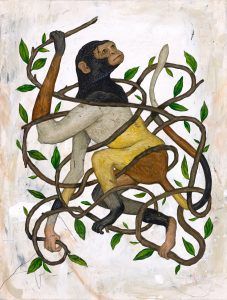Erika Check Hayden in the New York Times:
 In 1837, Charles Darwin sketched a spindly tree of life in one of his notebooks. Its stick-figure trunk sprouted into four sets of branches. The drawing illustrated his radical idea that, over time, organisms change to give rise to new species.
In 1837, Charles Darwin sketched a spindly tree of life in one of his notebooks. Its stick-figure trunk sprouted into four sets of branches. The drawing illustrated his radical idea that, over time, organisms change to give rise to new species.
“I think,” Darwin scrawled, suggestively, above his humble tree.
Biologists have worked since then to fill in the details of that tree. While all beings are related, Darwin intimated, it should be possible to classify all living things into distinct lineages of more closely related species — branches — based on their shared evolutionary histories.
Darwin and others used physical similarities and differences between organisms to add ever more details to his basic tree. Then, after the discovery of DNA’s structure in 1953, scientists began tracing the evolutionary history of life through its shared genetic code.
But that project has now reached a crisis point, David Quammen writes in his new book, “The Tangled Tree.” Genetics is revealing that the branches on Darwin’s tree of life are not so separate from each other as was once thought: Genes sometimes skip from species to unrelated species, effectively fusing different branches together. The big question now is whether Darwin’s tree represents a fundamentally flawed conception of evolutionary history or is merely in need of revision.
More here.
